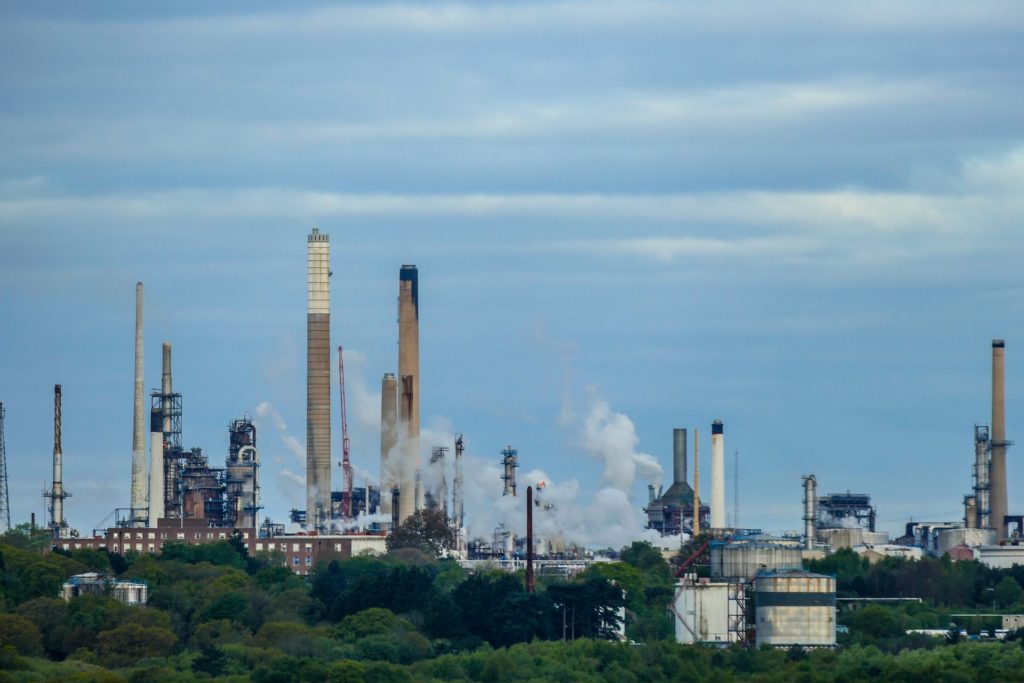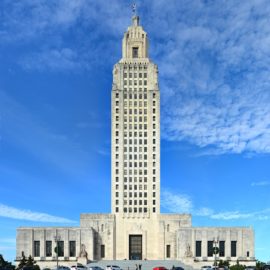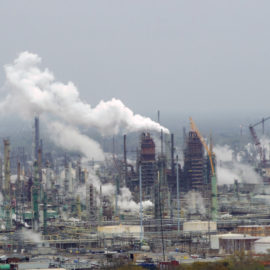
The country average on emissions from manufacturing is in the 22% range. In Louisiana it is in the 62% range. How to cut greenhouse emissions when most are in manufactoring, in our case, refineries who are big polluters.
As scientists deliver increasingly dire warnings to curtail the greenhouse gases that are changing the world’s climate, Louisiana faces special challenges in reducing its emissions: More than half of the carbon emitted in the state comes from chemical plants and oil refineries. While other states might aim to reduce emissions by encouraging renewable energy or electric vehicles, Louisiana must work closely with business interests to come up with solutions. A recent analysis by LSU energy professor David Dismukes found that industry accounts for 62% of Louisiana’s greenhouse gas emissions — almost three times their national average. Among the biggest sources are the CF Industries fertilizer complex at Donaldsonville, the ExxonMobil refinery in Baton Rouge and the Sabine Pass LNG export site in Cameron Parish. Alex Kolker, a coastal science professor at Louisiana Universities Marine Consortium and member of the science advisory group of Gov. John Bel Edwards’ climate task force, said discussions within the panel have included “everything from reducing the carbon footprint of facilities to burying carbon dioxide underground, to improving our energy efficiency, to increasing solar and wind.”
nola.com
Solar and wind are in reach as there are solar farms being put up and there is a plan for wind farms in the Gulf.
Producing less oil and gas would be another way to reduce emissions. But it’s not an idea that appeals to industry advocates, who argue that Louisiana must balance the economic interests of business and jobs with climate goals. Tyler Gray, president of the Louisiana Mid-Continent Oil and Gas Association and a member of the climate task force, said the transition away from fossil fuels can’t happen overnight. “Do you want to have a state that’s even further down into poverty because there are fewer jobs?” he said. He said society will still need gasoline and diesel for things such as shipping and making plastic medical equipment. Instead, Gray is lobbying for solutions such as carbon storage and sequestration, that is, pumping emissions deep underground. The task force will hold a meeting about this idea in a few weeks.
Is this enough, though. We have a big problem and that will take far more than short solutions.
Gray said he’s also pushing the idea to cut emissions at the plants themselves, by retrofitting them with technology to capture the pollution before it gets trapped in the atmosphere where it holds heat. “You have to have a market-driven, broad-based policy. Because if you don’t, then you’re going to … have an economic impact that will be far-reaching,” Gray said. For some, however, reducing emissions isn’t enough. Colette Pichon Battle, director of the Gulf Coast Center for Law & Policy, said even if Louisiana reduces carbon emissions, the environment and residents will remain threatened as long as the state lets polluting industries operate. “While we’re looking at decreased numbers around emissions, we’re not actually looking at the total impact of the industry on our people and their health – the true costs here,” Battle said. She added that air pollution doesn’t just originate in one region and stay there. For example, the CF Industries nitrogen fertilizer plant in Donaldsonville, the state’s single biggest source of greenhouse gas emissions, ends up affecting the state twice. The fertilizer is shipped north to be used on corn and soybean fields in the Midwest, where it then runs off of those fields into streams and rivers that carry it to the Mississippi River. It then flows to the Gulf of Mexico and causes huge algae blooms that create the hypoxic area known as the dead zone.
The companies seem to realize that they have to be at least a little proactive.
A CF Industries spokesperson said the company has a plan to cut emissions, zeroing them out by 2050 largely by using ammonia production rather than using fossil fuels. Pichon Battle says the noble goal of canceling emissions is not enough. Planting forests to offset emissions, or pumping carbon underground, doesn’t alleviate the air and water pollution created by chemical, oil and gas plants in the communities that surround them, she said. “We have a broader duty to the communities of south Louisiana to make sure that what we’re investing in the future is safe and healthy for our people,” she said.
In short, it will take all of us, companies and people, to make saving the world a reality. Short baby steps will not work. We need much bolder ideas.



